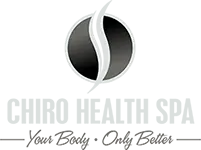Here’s a typical scoliosis analysis – a child goes to the school nurse, removes most of their clothes, and bends forward. The nurse then says there looks to be a “mild scoliosis” and to see the pediatrician for further evaluation.
This example highlights the most important part of scoliosis – early detection is key. But here in the 21st century, so much more can and needs to be done to confirm where and how significant the scoliosis really is.
Scoliosis is any curvature left or right – either a “C” curve or an “S” curve – when looking at someone from the back. Scoliosis is generally categorized as mild, moderate, or severe, which is fully determined by x-ray and measurement of the angles of the curves. These curvatures can cause pain, tightness, or discomfort; in more severe cases it can even interfere with proper organ development and function and will require surgery. Some milder or chronic cases show no pain or discomfort at all.
There’s a lot of debate about how scoliosis starts, but we can agree that once scoliosis sets in, there must be a certain level of follow-up to ensure that it doesn’t get worse quickly, particularly in kids. Some factors – trauma, repetitive stress, genetics – altered your spine’s growth into a “new normal” position at that time, and the bones never “got the memo” to move back to the right position. As a result, what should look like a straight line from the back starts to show curves, which become more visible when bending forward due to the muscles that surround the spine growing more on one side than the other.
The goals of treatment in scoliosis differ for kids and adults. In kids, we’re looking to get the most amount of improvement in the shortest possible time, especially if they’re at a crucial growth age (girls 9-13 years old; boys 11-15 years old). The big idea: let the spine grow into a good structure instead of a bad structure. In adults, we’re generally trying to stabilize the scoliosis from getting worse, and improvement would be a nice side effect. This is because adults typically have muscle patterns that have been set in for many years and are less responsive to change; kids are still flexible and pliable and move easier.
The key to solving scoliosis is to make sure there is good motion in the bones and muscles and use that motion to guide the spine toward the correct posture. This is where our specialty lies within chiropractic – restoring your range of motion, building your strength, and addressing your spinal alignment to make it as neutral as possible for the long term.


